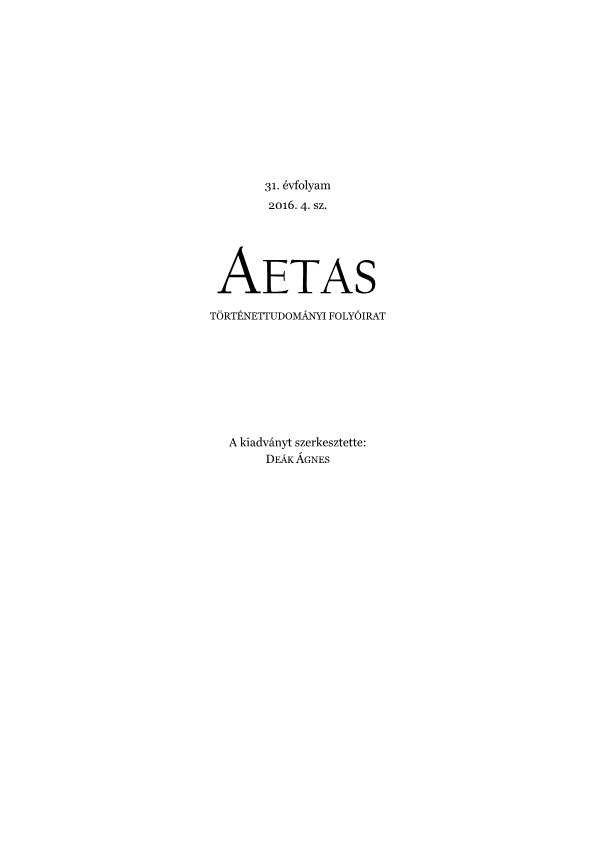Tagányi és Szekfű. Adalékok egy mester–tanítvány kapcsolat historiográfiai összefüggéseihez
Tagányi and Szekfű. Additions to the Historiographical Associations of a Master-Disciple Relationship
Author(s): Gábor SzeberényiSubject(s): Recent History (1900 till today), Period(s) of Nation Building
Published by: AETAS Könyv- és Lapkiadó Egyesület
Summary/Abstract: The paper intends to continue the exploration of the personal and historiographical relationship between Károly Tagányi (1858–1924) and his fellow historian Gyula Szekfű (1883-1955), who was one generation younger. Efforts to do so had already been made but were discontinued in the 1970s. By picking up the thread, my objective is to deepen Károly Tagányi’s still rather neglected historiographical reception. The paper follows the relationship of the two historians from Szekfű’s arrival in Vienna (1907) until the publication of his first work receiving widespread attention, Serviensek és familiárisok (1912). In the first half of the paper, which primarily draws on information found in manuscript letters, I focus on that segment of the social network surrounding Gyula Szekfű in Buda and later in Vienna which is related to his move to Vienna. One the one hand, I do so because my goal is to determine, more accurately than before, the role Tagányi played in this; on the other hand because their personal and professional rapport, the masterdisciple relationship, which lays the foundation of their future relations, originates from this period. In the second half of the paper, I explore the effective influence of Károly Tagányi’s historiography in Szekfű’s first notable work that is the most closely related to Tagányi’s historiography from among all his writings. In this respect, the study of both historiographical information and that gleaned from the correspondence of this period shows that, contrary to previous views, the criticism of Werbőczy Szekfű voices in his Serviensek does not originate with Tagányi but was Szekfű’s own invention, for the substantiation of which, however, he did draw on the rhetoric of Tagányi’s writings. Nevertheless, the social and government historical concept in Serviensek that was, to some extent, effectively inspired by Tagányi did influence the later writings of Tagányi as well, though contemporary reception (mainly Bálint Hóman and Henrik Marczali) was strongly critical of the narrative truth of the work. And the professional relationship developing between them is also noticeable later up until Károly Tagányi’s death (1924) in a plan for a common undertaking that was ultimately not realized.
Journal: AETAS - Történettudományi folyóirat
- Issue Year: 2016
- Issue No: 4
- Page Range: 29-56
- Page Count: 28
- Language: Hungarian

